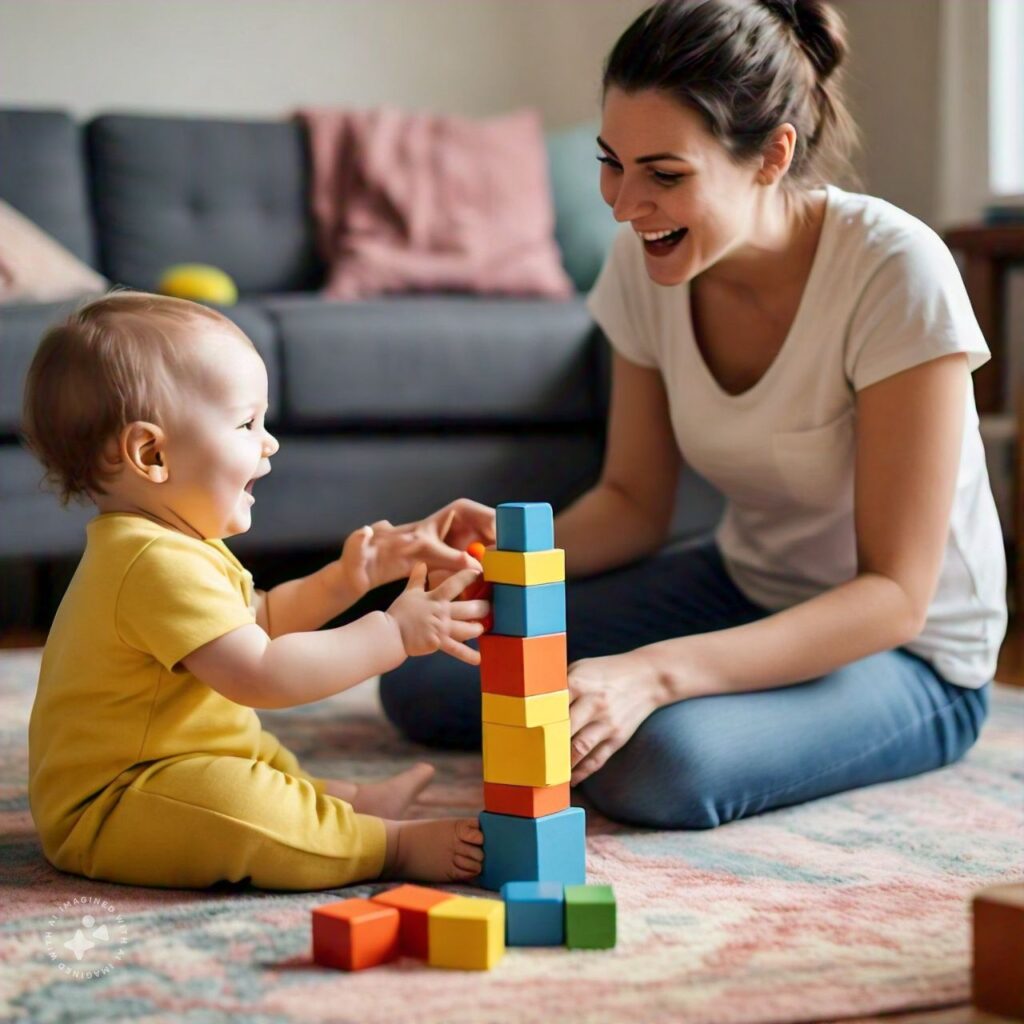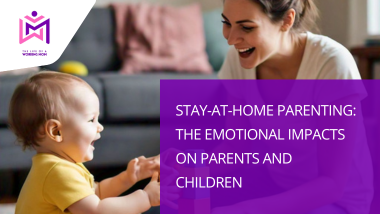
Stay-at-home parenting is a journey that comes with its own set of rewards and challenges. The decision to stay home and raise her children is both a privilege and a challenge. As the sun rises, Maria sips her morning coffee while glancing at the chaos around her. Toys scattered across the living room, a toddler pulling at her pants, and a pile of laundry waiting to be tackled this is the life of a stay-at-home mom.
Many moms find themselves wondering how their role affects their emotional well-being and that of their children. This article delves into the emotional impacts on stay-at-home parenting, exploring its effects on both parents and children.
1. The Emotional Aspects of Stay-at-Home Parenting
Stay-at-home parenting is often romanticized, but it comes with emotional complexities that can be overwhelming. Parenting is an emotional journey filled with highs and lows, and the transition to being a stay-at-home parent can amplify these feelings.
The Highs and Lows of Stay-at-Home Parenting
As a stay-at-home mother, Maria experiences the joy of watching her children grow and discover the world. However, she also faces moments of frustration and isolation. It’s important to recognize that both feelings are valid. The emotional aspects of stay-at-home parenting encompass love, anxiety, pride, guilt, and joy.
- Joy and Pride: Witnessing a child’s milestones, like their first steps or first words, fills a parent’s heart with joy. These moments create lasting memories and a deep connection between parent and child.
- Guilt: Many stay-at-home parents grapple with guilt over not contributing financially to the family or feeling they are not doing enough. This guilt can be particularly acute for those who once had fulfilling careers and now find themselves at home all day.
- Anxiety: Concerns about a child’s development or the pressures of stay-at-home parenting can lead to anxiety. The fear of not being a good enough parent looms large, especially with societal expectations constantly being broadcasted through social media.
These emotions can fluctuate throughout the day, making it essential for stay-at-home parents to find ways to manage them effectively. Finding balance becomes critical as they navigate these emotional highs and lows of stay-at-home parenting.
The Impact of Social Interaction in Stay-at-Home Parenting

While staying at home with the kids provides ample opportunity for bonding, social interaction is also essential for a child’s emotional growth. Children who interact with peers learn valuable social skills such as sharing, empathy, and conflict resolution.
Stay-at-home moms can facilitate this by organizing playdates, attending community events, or enrolling their children in classes. These experiences not only enrich a child’s emotional development but also provide stay-at-home parents with the opportunity to connect with other adults, combating feelings of isolation. To explore more about building these social connections, visit our Community Support page.
The Role of Attachment
Research shows that a secure attachment between a child and their stay-at-home parent promotes emotional security. Children who feel safe and loved are more likely to develop positive self-esteem and healthy relationships later in life.
When parents spend quality time engaging with their children, they reinforce the child’s sense of security. This can be as simple as playing together or having meaningful conversations during meal times. The focus should be on the home environment, where open communication and love thrive.
Emotional Regulation
Children learn how to manage their emotions by observing their stay-at-home mother. If a mom handles stress gracefully, her children are likely to mimic that behavior. On the other hand, if a mother struggles to cope with stress, her children may develop unhealthy coping mechanisms.
Finding balance between household responsibilities and emotional availability is crucial. Stay-at-home moms should aim to prioritize emotional engagement during their interactions with their children. Techniques such as deep breathing and mindfulness can help parents manage their own emotions, creating a more stable environment for the children.
The Impact of Social Interaction
While staying home with the kids provides ample opportunity for bonding, social interaction is also essential for a child’s emotional growth. Children who interact with peers learn valuable social skills such as sharing, empathy, and conflict resolution.
Stay-at-home moms can facilitate this by organizing playdates, attending community events, or enrolling their children in classes. These experiences not only enrich a child’s emotional development but also provide moms with the opportunity to connect with other adults, combating feelings of isolation.
2. The Emotional Impacts of Becoming a Parent
Becoming a parent is one of life’s most significant changes. For many, this transition brings about profound emotional impacts.
Identity Shifts
When a woman becomes a stay-at-home mom, she may experience an identity shift. Many mothers find themselves questioning their purpose outside of motherhood. The transition from working in the workforce to focusing solely on the home can lead to feelings of loss and frustration.
Some women might miss the sense of achievement and independence they had in their careers. This loss can sometimes lead to a decline in self-esteem.
Finding New Interests
It’s important for stay-at-home moms to seek out new interests or hobbies that allow them to express themselves. Whether it’s taking a painting class, joining a book club, or starting a blog, pursuing personal interests helps maintain a sense of identity outside of parenting.
Many moms also find fulfilling of volunteering. This can provide a sense of accomplishment and community, helping to bridge the gap between their previous lives and their current roles as stay-at-home parents.
The Emotional Rollercoaster
Parenting can feel like an emotional rollercoaster. One minute you’re celebrating a child’s success, and the next, you’re dealing with a tantrum. This constant fluctuation can be exhausting and may lead to emotional burnout.
Recognizing and accepting these emotional highs and lows is vital for stay-at-home moms. It’s perfectly okay to ask for help or take time for self-care. After all, a well-rested parent is better equipped to handle daily challenges.
Stay-at-Home Parenting: Some Disadvantages

While there are many benefits to stay-at-home parenting, it’s essential to acknowledge the disadvantages as well.
Lack of Adult Interaction
Spending most of the day home with the kids can lead to feelings of isolation. While being with children is rewarding, missing out on adult conversations can take a toll on a mom’s mental health.
To combat this, stay-at-home moms should consider joining local parenting groups or online forums. Engaging with others in similar situations can provide much-needed social interaction. Scheduling regular meet-ups with friends or family can also help combat feelings of loneliness.
Financial Stress
Stay-at-home parents often experience financial pressure. The decision to stay home can mean sacrificing a second income, leading to budget constraints. This financial strain can lead to feelings of guilt and stress, especially when mothers worry about providing for their family.
Finding part-time work or side gigs can alleviate some financial burdens. Many stay-at-home moms successfully juggle home life with flexible work options, such as freelancing or remote jobs that allow them to earn while staying involved with their children.
Managing Household Responsibilities
The expectation to manage all household tasks can also be a source of stress. Many stay-at-home mothers feel the pressure to create a perfect home environment. The reality is that juggling childcare, cleaning, cooking, and errands can be overwhelming.
To manage these responsibilities effectively, stay-at-home moms should consider creating a daily schedule. Prioritizing tasks and breaking them down into manageable chunks can make the workload feel less daunting. Learning to ask for help, whether from a partner, family member, or friend, is equally important.
It’s a common misconception that stay-at-home moms have less stress than those who work outside the home. In reality, being a stay-at-home parent comes with its own set of challenges.
The Pressure to Do It All
Many stay-at-home mothers feel an immense pressure to manage every aspect of their household perfectly. This includes everything from cleaning and cooking to providing educational activities for their children. When things don’t go according to plan, feelings of guilt and inadequacy can surface.
To combat this, moms should set realistic expectations for themselves. It’s okay if the house isn’t spotless or if dinner is simple. What matters most is the love and care given to the children.
Lack of Breaks and Personal Time
Unlike working parents who often have structured breaks, stay-at-home moms may find themselves on duty 24/7. The lack of personal time can lead to emotional burnout. Finding small pockets of time for self-care is crucial. Whether it’s a quick walk, reading a book, or enjoying a cup of coffee in peace, taking time for oneself helps recharge emotional batteries.
Moms can also benefit from establishing a routine where their partners or family members take over childcare for short periods. This time away can help rejuvenate their spirits and foster a healthier emotional state.
3. Creating a Supportive Environment
Being a stay-at-home mom is rewarding but can also be emotionally taxing. Creating a supportive environment is key to maintaining emotional well-being for both parents and children.
Building a Support Network
Having a support network is essential for any stay-at-home parent. Connecting with other parents can provide a sense of community. Local parenting groups, online forums, and social media can be great resources for finding support.
Joining a local playgroup or parenting class not only fosters connections with other moms but also provides structured activities for the kids. This social interaction can be a game-changer in reducing feelings of isolation and building friendships.
Prioritizing Self-Care
Moms often forget to prioritize their own needs while taking care of their families. However, self-care is not selfish; it’s necessary for mental health. Whether it’s engaging in a hobby, exercising, or simply resting, moms should make time for themselves.
Self-care can also include seeking professional help if feelings of depression or anxiety become overwhelming. Mental health is crucial, and recognizing the need for support is a sign of strength, not weakness.
Setting Boundaries
Establishing boundaries is crucial for maintaining emotional health. This might mean designating specific times for family activities, personal time, or even household chores. By setting these boundaries, stay-at-home parents can find a better balance between their responsibilities and their well-being.
Clear communication with partners about the need for personal time or help around the house can significantly alleviate stress. It’s essential for both parents to work together to create a harmonious home environment.
4. The Importance of Emotional Literacy
Emotional literacy refers to the ability to understand and express one’s emotions. For stay-at-home moms, developing this skill is crucial not only for their emotional well-being but also for teaching their children.
Modeling Emotional Intelligence
When mothers model emotional intelligence by openly discussing their feelings and coping strategies, children learn valuable lessons about handling emotions. This modeling can help kids develop their emotional vocabulary and foster healthier emotional responses.
Encouraging children to express their feelings and teaching them how to recognize emotions in themselves and others can create a more emotionally aware family environment.
Resources for Developing Emotional Literacy
There are numerous resources available to help parents develop emotional literacy skills. Books, online courses, and workshops focusing on emotional intelligence can provide tools and strategies for both parents and children.
Reading books about emotions together as a family can also be a great way to foster discussions about feelings. Children can learn to identify emotions in characters, prompting conversations about their own feelings.
Conclusion:
Stay-at-home parenting is a rewarding yet emotionally demanding journey. For moms like Maria, the emotional toll can be as real as the joy of watching their children grow. Children thrive when their stay-at-home parent is present, but it’s equally important to incorporate social interaction and personal balance into daily life.
As stay-at-home mothers, it’s essential to find emotional support, maintain a sense of self, and prioritize mental health. By addressing their own needs, stay-at-home moms can nurture themselves and their children in a healthy and supportive environment. Remember, you’re not alone in this journey. Reach out, connect, and embrace the beautiful chaos of stay-at-home parenting.
For more information on managing emotional well-being as a stay-at-home parent, consider visiting the following resources:
- American Academy of Pediatrics: Parenting Resources
- Psychology Today: Understanding the Emotions of Parenthood
Are you a stay-at-home mom looking for support and resources? Explore more about stay-at-home parenting and find tips for man
Are you a stay-at-home mom looking for support and resources? Explore more about stay-at-home parenting and find tips for managing your emotional health on The Life of a Working Mom.


